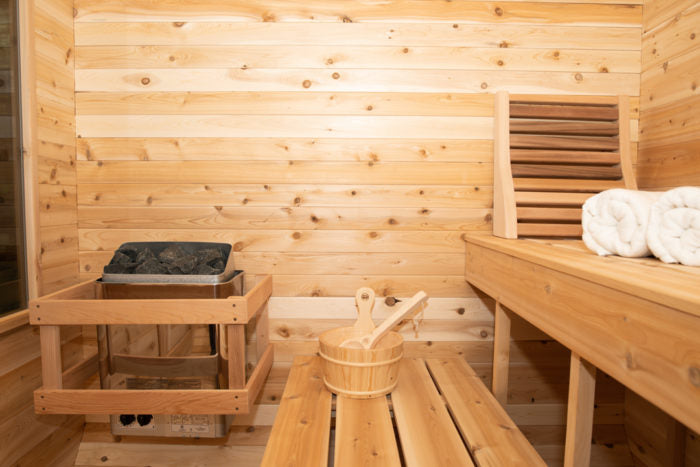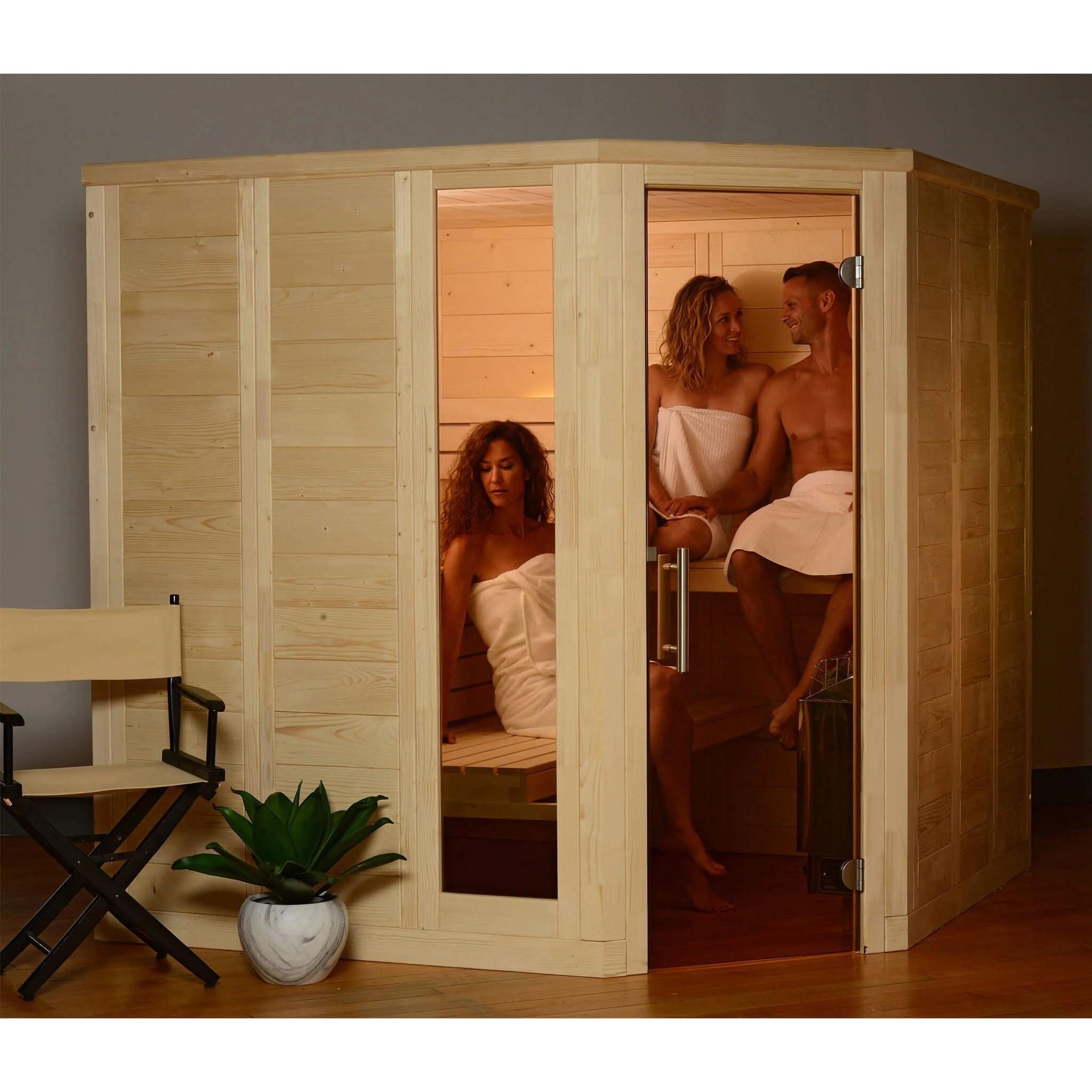The 5-Minute Rule for Traditional Sauna
Table of ContentsThe Traditional Sauna StatementsNot known Incorrect Statements About Traditional Sauna The Traditional Sauna PDFsUnknown Facts About Traditional Sauna
A lot of the weight lost in a sauna is water loss and is re-gained upon rehydrating. However, undeniably sauna can be a fundamental part of a healthy weight-loss program. To check out the distinctions in between traditional and IR saunas, I will certainly divide these into proven, theoretical, and fabricated distinctions.Hence, the hottest factor in the saunawhich is at the ceiling directly over the sauna heateris generally between 185 and 190 F. Traditional Sauna. Claims that a standard sauna exceeds 200 F is merely not true and not appropriate for electric saunas sold in the United States. The temperature level for a far-infrared sauna is usually set between 120 and 140 F; however, unlike the typical sauna, the objective in and IR space is not to achieve a high temperature level
As a result of this, the temperature difference is virtually pointless, since extreme sweating results in both sauna kinds, but the method of warming the body is different. In an IR sauna the bather will really feel hot and will sweat a lot, however at much reduced temperatures. Thus, if the goal is to spend longer periods of time in the sauna, the IR sauna is a great choice.

Little Known Facts About Traditional Sauna.
When the high temperature is accomplished, the components cycle on and off to maintain the high temperature. A lot of typical sauna users delight in putting water over the rocks to develop heavy steam to raise sauna moisture levels. The benefits of putting water over the rocks consist of: making the area extra comfortable, moistening the nasal flows, and enabling the use of aromatherapy by blending vital oils with the water.
In a far-infrared sauna, the warm front penetrate the body to successfully warm the body and raise the body core temperature level. To attain this boosted temperature level, Far-infrared emitters produce infrared power which is close to the very same wavelength as that which the body normally emitsoften described as the "Vital Array" of 7 to 14 microns), so the power is well received by the body.
When the energy goes into the body, it read this post here triggers the body temperature level to increase and inevitably results in perspiration. In an infrared sauna it is necessary for the emitters/heaters to stay on virtually continuously. Because there is no mass of rocks to maintain warm, the sauna will certainly cool if the emitters turned off.
As discussed above, the sauna bather in an infrared space desires to position himself before running emitters to obtain optimal gain from the warm. The heating time for both rooms can be extremely various, depending on how the areas are made use of. For a traditional sauna, a bather should allow 30-40 minutes for the space to accomplish a wanted temperature and to correctly pre-heat the rocks.
9 Easy Facts About Traditional Sauna Described
A well constructed sauna will normally attain a temperature of 150-160 F in about 30-40 minutes. For hotter temperature levels, the room may require to heat for a longer period.
To some, 15 minutes was "squandered" while the infrared energy heated up the timber panels instead than warming a body, while others find a pre-heated area to be a lot more comfy and think a raised beginning temperature level is needed to start perspiring. The size of suggested usage for each and every area is roughly the very same (10-15 mins per session); however, because of the lower air temperature levels and the capability to feel the impacts of infrared heat much faster than a traditional sauna, it is not uncommon for a person to spend a total of 20-30 mins in an infrared sauna.
Traditional saunas often tend to be larger (thus use more electrical power) than infrared saunas, although typical saunas are definitely readily available in one and 2 individual sizes too. For a two-person typical sauna, 5x6 or 5x7 dimension is most preferred. The top bench can conveniently seat two or 3 individuals and is likewise long enough to relax throughout the sauna session.


The ordinary price per kWH of power in the U.S. is around $0.11, so a 4.5 kW heating unit will certainly cost around $.50 to compete one hour, if the heating unit runs continually for one hour. Usually a sauna heating system will certainly run for 75% of the first hour and 50% of succeeding hours on because the elements cycle once the set temperature is attained.
Getting The Traditional Sauna To Work
A two individual far-infrared area is usually literally get more smaller than a conventional sauna, usually regarding 4' x 4' or smaller. The IR heater is generally 1.5-1.7 kW utilizing a 120 volt 15 amp plug-in solution. Given that the area can be utilized sooner than a sauna room, we will certainly presume the room is utilized read review for to of an hour including warm up time.
Ultimately, there is a seldom talked about distinction in the social experience in between both rooms. While our culture has actually lost a few of the social advantage of the standard sauna experience, it can be very socially gratifying. From family time in the sauna, to heart-felt conversations with loved ones, to sauna partiesthe traditional sauna experience can lead to intimate interacting socially.
Many higher end infrared rooms consist of colored light treatment, noise systems and full-glass fronts.
Comments on “The Facts About Traditional Sauna Uncovered”